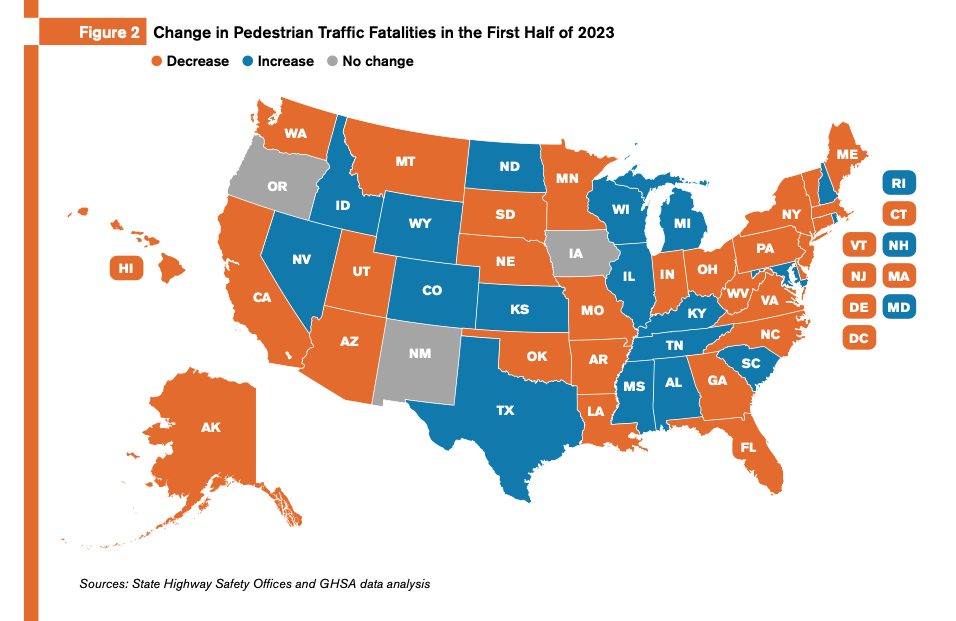
Getty Images
American pedestrians were at slightly less risk of being killed by a car last year. The Governors Highway Safety Association has just published a preliminary analysis of road safety data for the first half of 2023, and it has found a “modest” reduction in pedestrian fatalities, which have been all too high in recent years.
As with last year’s study, the GHSA found some states were much safer than others. In fact, 29 states and the District of Columbia recorded declines in the number of pedestrian traffic deaths for the first half of 2023, with Vermont recording no pedestrian deaths at all.
In total, the GHSA estimates that 3,373 pedestrians died on US roads between January and June 2023, which it says is a 4 percent decrease compared to the first six months of 2022. However, the report points out that even though this year saw a small decline, the number of pedestrian deaths for the first half of 2023 is 14 percent higher than the same time period in 2019.
“After witnessing pedestrian deaths rise each year, it’s encouraging to finally see a small decrease,” said Jonathan Adkins, GSHA’s CEO. “But the fact remains that 18 people go for a walk every day and don’t return home due to preventable crashes. The only acceptable number of traffic deaths is zero. We must seize on this recent momentum and continue to push for a safer system that protects people on foot from the dangerous driving behaviors that are all too prevalent.”

GHSA
The largest overall reduction in pedestrian deaths in absolute numbers occurred in California, which saw 66 fewer pedestrians die between January and June 2023 compared to the same six months in 2022. Colorado saw the greatest increase in real numbers, with 19 additional pedestrians dying versus the first half of 2022.
When expressed as a percentage change in pedestrian deaths, less populous states jump out—as well as Vermont, which recorded no pedestrian deaths during the time period and therefore saw a 100 percent decrease, and Nebraska, which also logged a 70 percent reduction. Meanwhile, Idaho saw a 150 percent increase in pedestrian deaths due to an additional six deaths.
When the GHSA data is normalized to population size—in this case, the rate of pedestrian deaths per 100,000 inhabitants—an interesting picture emerges. Eighteen states have a rate of pedestrian deaths above 1.0 per 100,000 inhabitants, and almost all of them are in the Sun Belt.

GHSA
Here, we can see the influence of both the natural and built environments at work—the report points out that these states have both warmer climates, which prompt more people to walk, and urban areas that were developed after the ascendency of the automobile, meaning more car-centric urban design. New Mexico fares worst of all on this measure, with a pedestrian death rate of 1.99 per 100,000 inhabitants during the first half of 2023, far higher than the nationwide average of 1.01 deaths per 100,000 inhabitants.
The GHSA report has some recommendations to make things safer for our most vulnerable road users. More mid-block crossing infrastructure would help, as only 22 percent of pedestrian deaths occurred at crossings in 2021. Lower speed limits are lifesavers, too, and already some US cities have moved to a default 20 mph (32 km/h) limit. Better street lighting would also help this problem, as a disproportionate number of crashes occur in poor light conditions.
We can expect the GHSA report for the full year to be published sometime around June.




















+ There are no comments
Add yours